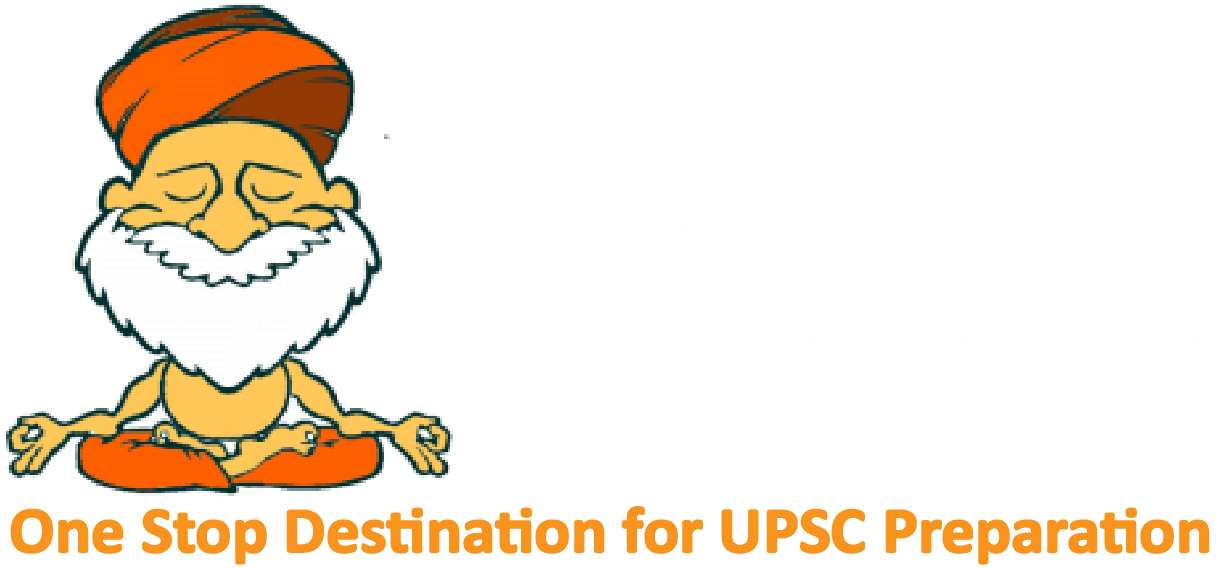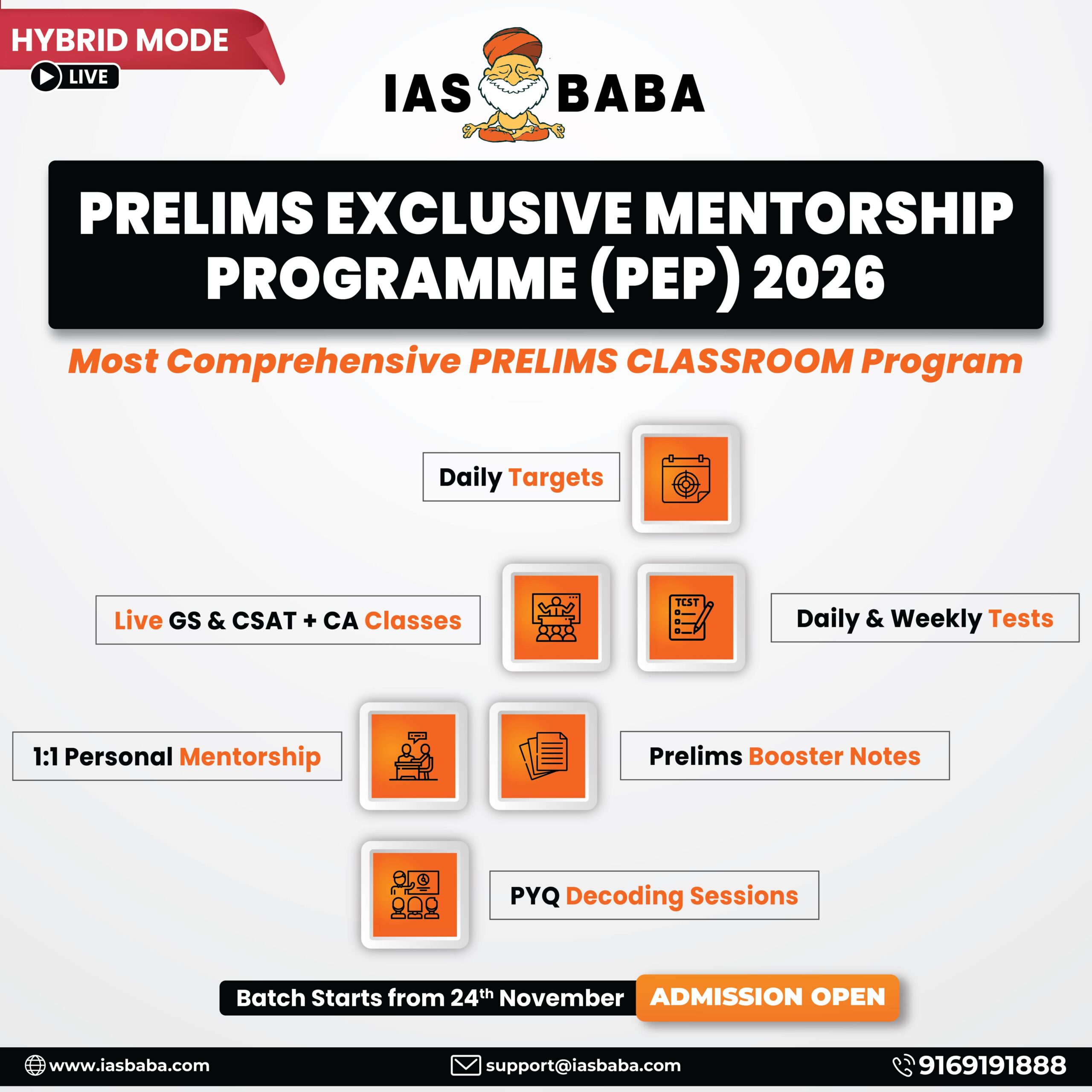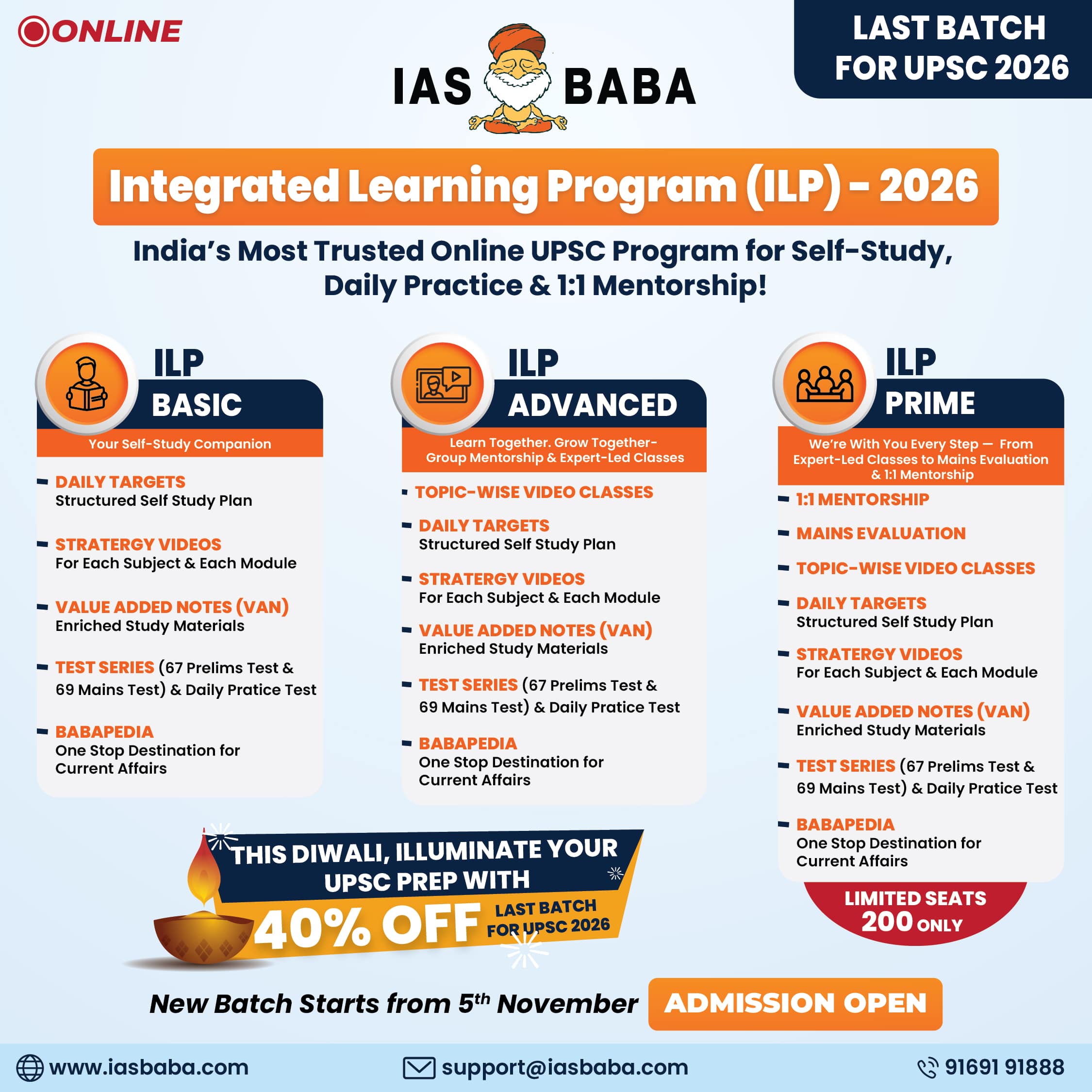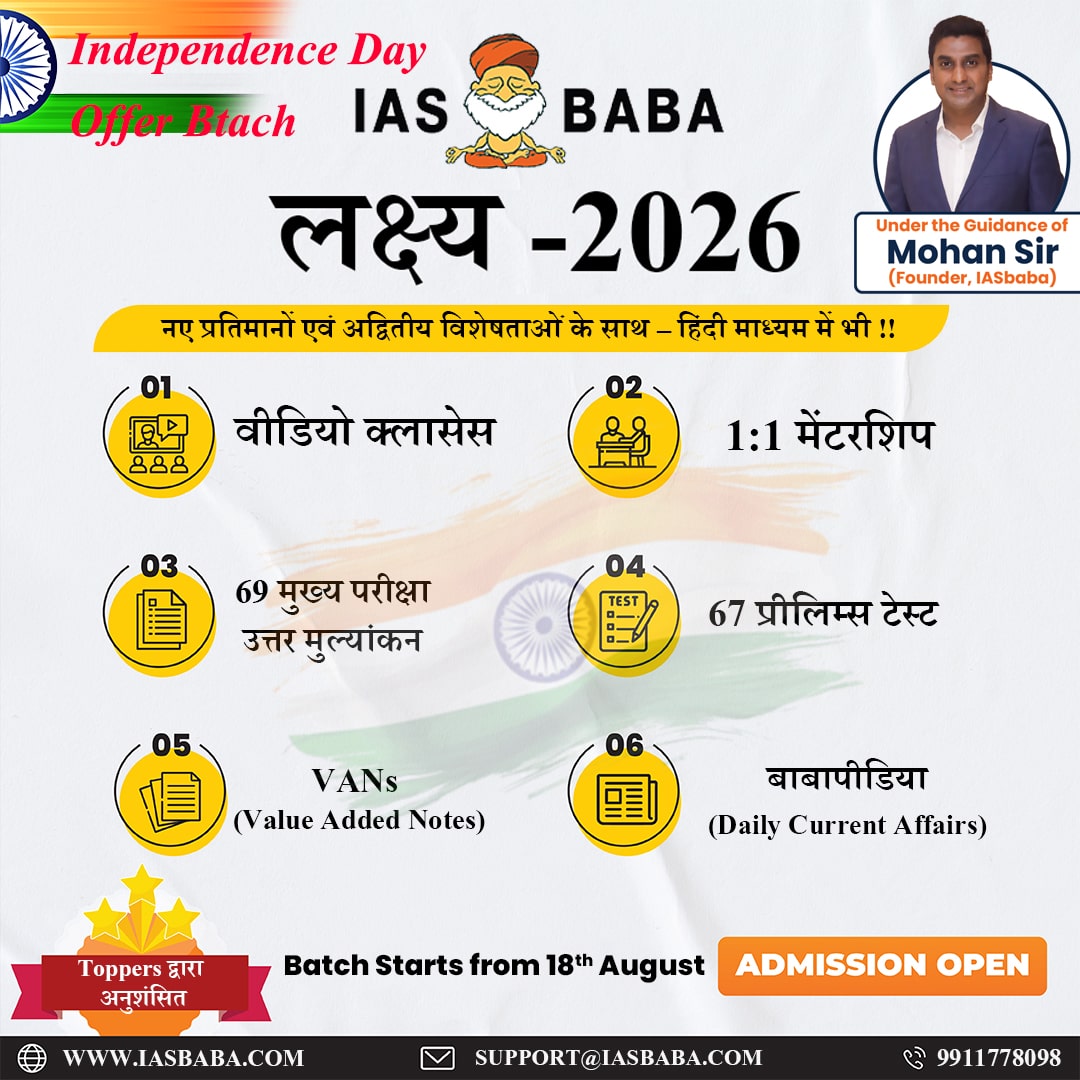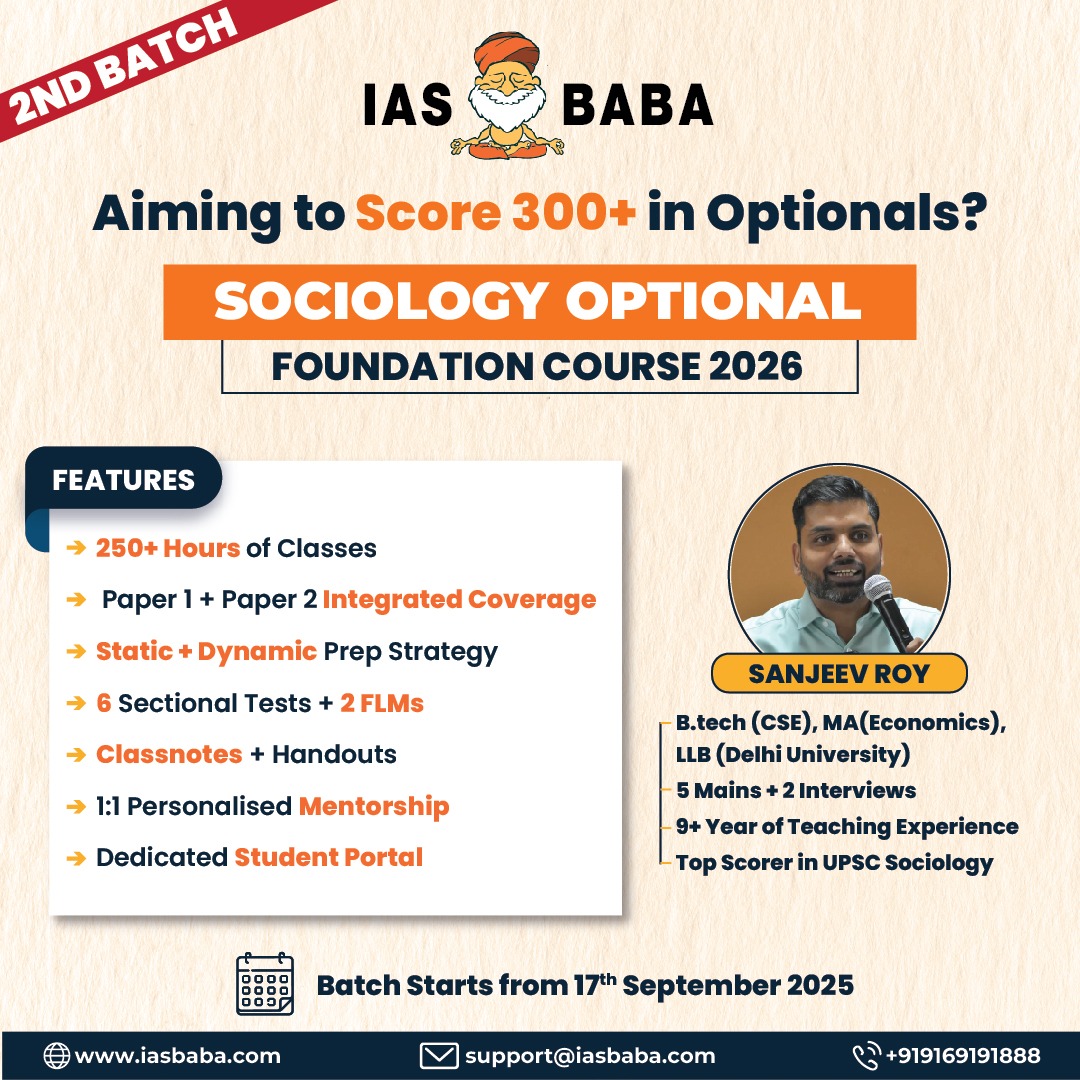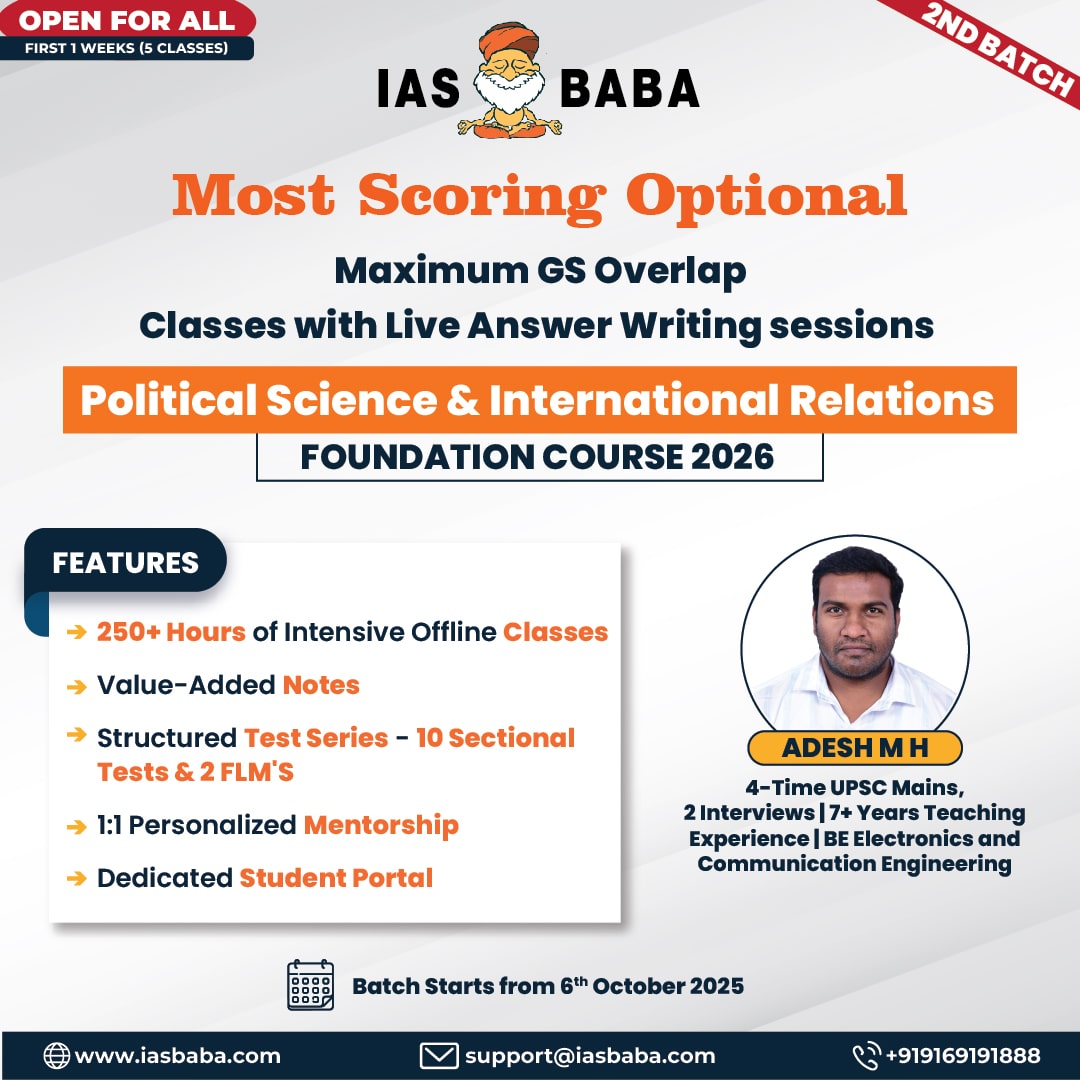IASbaba's Daily Current Affairs Analysis
Archives
(PRELIMS Focus)
Category: Geography
Context:
- Heavy metals are polluting the Cauvery River and its fish, researchers from Tamil Nadu have reported. They have also cautioned against consuming “regular” or “excessive” amounts of fish from here.
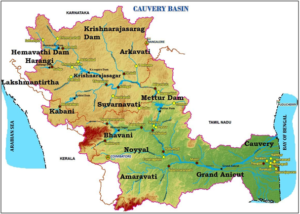
About Cauvery River:
- Nature: It is the third largest river – after Godavari and Krishna – in southern India, and the largest in the state of Tamil Nadu, known as ‘Ponni’ in Tamil.
- Basin states: The Cauvery River is one of the major rivers of the peninsula. It extends over states of Tamil Nadu, Karnataka, Kerala and Union Territory of Puducherry.
- Boundary: It is bounded by the Western Ghats on the west, by the Eastern Ghats on the east and the south and by the ridges separating it from Krishna basin and Pennar basin on the north.
- Origin: It rises at an elevation of 1,341 m at Talakaveri on the Brahmagiri range near Cherangala village of Kodagu district of Karnataka. The river drains into the Bay of Bengal at Poompuhar in the Mayiladuthurai district of Tamil Nadu.
- Length: Spanning approximately 800 kilometres, the Cauvery is a crucial lifeline for the states of Karnataka and Tamil Nadu.
- Significance: Known as the “Ganga of the South,” the Cauvery has historical, cultural, and economic significance, playing a pivotal role in the irrigation and water supply for millions of people in the region.
- Major left bank tributaries: These include Harangi, the Hemavati, the Shimsha and the Arkavati.
- Major right bank tributaries: These include Lakshmantirtha, the Kabbani, the Suvarnavati, the Bhavani, the Noyil and the Amaravati.
- Division: The basin can be divided into three parts, viz. the Western Ghats, the Plateau of Mysore and the Delta. The delta area is the most fertile tract in the basin.
- Soil types: The principal soil types found in the basin are black soils, red soils, laterites, alluvial soils, forest soils and mixed soils. Red soils occupy large areas in the basin. Alluvial soils are found in the delta areas.
- National Parks in this basin: These include Bandipur National Park, Nagarhole National Park and Bannerghatta National Park.
Source:
Category: Environment and Ecology
Context:
- The High Seas Treaty was ratified by over 60 countries in September; it will now be enforced in January 2026. The treaty sets rules to preserve and use marine biodiversity sustainably and addresses threats from climate change, overfishing and pollution.
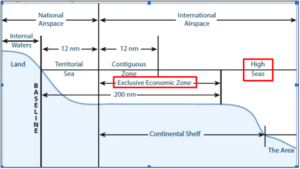
About High Seas:
- Definition of high Seas: According to the 1958 Geneva Convention on the High Seas, parts of the sea that are not included in the territorial waters or the internal waters of a country are known as the high seas. It is the area beyond a country’s Exclusive Economic Zone (that extends up to 200 nautical miles from the coastline) and till where a nation has jurisdiction over living and non-living resources.
- Significance of high seas: The high seas cover over 64% of the world’s oceans and 50% of the Earth’s surface, making them vital for marine life. They are home to around 270,000 known species, with many yet to be discovered.
- Influence on climate: The high seas regulate climate, absorb carbon, store solar radiation, and distribute heat, crucial for planetary stability and mitigating climate change.
About High Seas Treaty:
- Formal name: It is formally called the Agreement on Conservation and Sustainable Use of Marine Biological Diversity of Areas Beyond National Jurisdiction. In short, known as BBJN or High Seas Treaty.
- Under UNCLOS: It is a new international legal framework under UNCLOS for maintaining the ecological health of the oceans.
- Objective: The treaty was negotiated in 2023 and is meant to reduce pollution, and promote the conservation and sustainable use of biodiversity and other marine resources in ocean waters outside the national jurisdiction of any country.
- Focus on fair and equitable sharing: It identifies Marine Genetic Resources (MGRs) as the common heritage of humankind, and insists on a fair and equitable sharing of benefits.
- Includes EIAs: The treaty also entails Environmental Impact Assessments (EIAs) for events potentially affecting these areas, especially when cumulative and transboundary impacts are taken into account.
- Evolution:
- The first steps for the treaty began two decades ago. In 2004, the UN General Assembly formed an ad-hoc working group to fix the gap in the UN Convention on the Law of the Sea (UNCLOS), 1982, which did not have clear guidelines on protecting BBNJ.
- By 2011, states had agreed to negotiate on four key issues, mainly MGRs, ABMTs, EIAs, and capacity building and technology transfer. Following this, four Intergovernmental Conference sessions were held between 2018 and 2023.
- The parties to these discussions finally reached an agreement in March 2023, which led to the adoption of the treaty in June 2023.
Source:
Category: Government Schemes
Context:
- The National Beekeeping & Honey Mission (NBHM) launched in 2021 by the Government of India is driving the ambitious “Sweet Revolution” in the country.
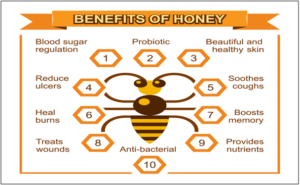
About National Beekeeping and Honey Mission:
- Nature: It is a Central Sector Scheme launched by the Government of India.
- Objective: It focuses on overall promotion and development of scientific beekeeping and the production of quality honey and other beehive products.
- Implementation: It is implemented by the National Bee Board (NBB) through 3 Mini Missions (MMs).
- Mini Mission-I: Under this Mission, thrust will be given on production & productivity improvement of various crops through pollination assisted by adoption of scientific beekeeping;
- Mini Mission-II: This Mission will concentrate on post-harvest management of beekeeping/beehive products including collection, processing, storage, marketing, value addition, etc.
- Mini Mission-III: This Mission will concentrate on research & technology generation for different regions/states/agro-climatic and socio-economic conditions.
- Funding: The scheme has a total budget outlay of ₹500 crore for three years (2020–21 to 2022–23) and has been extended for another three years (2023–24 to 2025–26).
- Major objectives:
- Promoting holistic growth of the beekeeping industry for providing livelihood support to farm and non-farm households.
- Developing additional infrastructural facilities for developing quality nucleus stock of honeybees, multiplication of stock by bee breeders and post-harvest and marketing infrastructures.
- Setting up of state-of-the-art Labs for testing of honey & other beehive products at regional levels and Mini/Satellite Labs at district levels.
- To develop blockchain/ traceability system for of source of honey & other beehive products and using IT tools in beekeeping, including online registration, etc.;
- Institutional Framework: It focuses on strengthening beekeepers through collective approaches like SHGs, FPOs, and cooperatives.
Source:
Category: Defence and Security
Context:
- According to Defence PRO Lt Col Mahendra Rawat, India will hold tri-service exercise ‘Poorvi Prachand Prahar’ in Mechuka, Arunachal Pradesh.
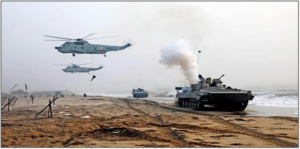
About Poorvi Prachand Prahar Exercise:
- Nature: It is a tri-service military exercise conceived as a forward-looking exercise, which will validate multi-domain integration across land, air, and maritime fronts.
- Location: It will be held in Mechuka, Arunachal Pradesh.
- Objective: It is aimed at enhancing warfighting capabilities, technological adaptation, and operational synergy among the Army, Navy, and Air. It refines interoperability, improves situational awareness, and validates command-and-control structures for joint missions.
- Focus: The exercise focuses on multi-domain integration — across land, air and maritime domains — to enhance operational synergy, technological adaptation, and readiness for future conflicts.
- Involves special forces: The exercise involves coordinated employment of special forces, unmanned platforms, precision systems and networked operations centres operating in unison under realistic high-altitude conditions.
- Significance: ‘Poorvi Prachand Prahar’ follows previous tri-service drills — ‘Bhala Prahar’ (2023) and ‘Poorvi Prahar’ (2024) — marking the next step in India’s ongoing drive toward joint military integration and mission readiness.
Source:
Category: Miscellaneous
Context:
- The SC clarified that the Union government can comprehensively assess and reconcile all Adjusted Gross Revenue (AGR) dues of Vodafone-Idea up to the financial year 2016-17 in accordance with the Deduction Verification Guidelines of February 3, 2020.
About Adjusted Gross Revenue (AGR):
- Definition: Adjusted Gross Revenue is the share of revenue that telecom operators in India are needed to pay to the Department of Telecommunications as part of their license agreement.
- Background: The telecom sector was liberalised under the National Telecom Policy, 1994 after which licenses were issued to companies in return for a fixed license fee. To provide relief from the steep fixed license fee, the government in 1999 gave an option to the licensees to migrate to the revenue sharing fee model. Under this, mobile telephone operators were required to share a percentage of their AGR with the government as annual license fee (LF) and spectrum usage charges (SUC).
- Used as a metric: Adjusted Gross Revenue is the metric used by the Department of Telecommunications in India to calculate the license fee and spectrum usage charges payable by telecom operators.
- Components: It includes earnings from telecom services (like calls, data, SMS, roaming, value-added services) as well as non-telecom revenues like interest income, asset sales, rent and foreign exchange gains to the Department of Telecom Communication.
- Exclusions: Certain items, such as GST (if already part of gross revenue) and revenue shared with other service providers (like roaming charges), are excluded.
- AGR Supreme Court Verdict (2019): In October 2019, the Supreme Court of India delivered a landmark judgment upholding the DoT’s definition of Adjusted Gross Revenue. The Court ruled that telecom operators must include non-core revenues in their AGR calculations. Consequently, it directed the companies to pay dues amounting to over ₹1.47 lakh crore including license fees, SUC, accrued interest, penalties, and interest on the penalties. This ruling finally increased the financial liability of telecom operators.
Source:
(MAINS Focus)
(GS Paper 3: Indian Economy – Growth, Development, and Employment; Effects of Technology on Employment and Skills)
Context (Introduction)
India’s Information Technology (IT) sector, long hailed as a driver of economic transformation and global prestige, now faces structural shifts driven by automation, restrictive global policies, and skill obsolescence, signalling an urgent need for reinvention and policy reform.
Main Arguments
- Structural Transformation of the IT Sector: The sector, contributing around 7% to India’s GDP and employing nearly 6 million people, is undergoing a fundamental shift rather than a collapse. Layoffs by TCS, Infosys, and others—nearly 50,000 jobs this fiscal year—reflect deeper systemic change.
- AI-Driven Automation and Workforce Displacement: The rise of Agentic AI, generative models, and automation is rendering routine coding and coordination tasks obsolete. Mid- and senior-level professionals trained in legacy platforms like SAP ECC face redundancy as clients demand AI-driven, cloud-native, and cybersecurity solutions.
- Global and Policy Constraints: Restrictive U.S. visa regimes, rising H-1B costs, and tightening client budgets in Western economies have forced Indian firms to localize operations, shrinking traditional outsourcing advantages. The earlier cost-arbitrage model is giving way to specialised, lean, AI-skilled teams.
- Skill Mismatch and Educational Deficiencies: The IT sector’s “assembly line” approach — training masses in basic coding — no longer suffices. There is a growing mismatch between industry demands and skill availability, as engineering curricula remain outdated, emphasizing rote coding over AI, data science, and ethics in technology.
- The New IT Paradigm – From Services to Solutions: Global clients now seek solution-based partnerships rather than manpower outsourcing. The emphasis has shifted from quantity to quality, where product innovation, problem-solving, and multidisciplinary collaboration drive competitiveness.
Issues/Criticisms / Challenges
- Job Insecurity and Silent Layoffs: ‘Silent layoffs’ through performance-linked exits and stalled promotions worsen employee morale and reduce trust between companies and workers.
- Lack of Social Safety Nets: India’s IT sector, historically insulated from labour welfare mechanisms, now faces an absence of retraining support, severance protection, and mental health systems.
- Slow Educational Reform: Engineering institutions lag behind in revising curricula, causing a widening industry-academia disconnect in emerging technologies and employability skills.
- Limited Governmental Foresight: Policy focus remains largely on digital literacy, not AI readiness, leaving workers ill-prepared for rapid technological disruptions.
Reforms and the Way Forward
- AI and Emerging Tech Upskilling: Large-scale reskilling is critical. Firms like TCS upskilling 5.5 lakh employees in AI must become a national norm through public–private partnerships and incentives for advanced technology training.
- Curriculum and Institutional Overhaul: Engineering education should emphasize machine learning, AI ethics, cybersecurity, and soft skills like collaboration and critical thinking. The National Education Policy (NEP) 2020 framework can anchor this transformation.
- Support for Startups and Product Innovation: India’s deep-tech and AI startup ecosystem needs fiscal incentives, venture capital access, and simplified regulations to shift the IT narrative from “service provider” to innovation hub.
- Policy and Global Engagement: Government must negotiate data sovereignty, visa access, and digital trade norms with global partners while ensuring domestic clarity in AI governance.
- Creation of Social Safety Nets: For displaced workers, mandatory severance pay (6–9 months), retraining subsidies, and psychological counselling should form the foundation of a humane transition policy.
Conclusion
India’s IT journey is evolving — from manpower-driven outsourcing to mindpower-led innovation. The transition, though painful, can be purposeful if steered with vision, skill, and courage.
- The focus must shift from counting coders to creating innovators who can lead India’s digital future.
- As Shashi Tharoor notes, the IT rose may have lost petals, but its roots remain strong — ready to bloom again if nurtured through reform and resilience.
Mains Question
- Discuss the challenges faced by India’s IT sector and suggest policy measures to ensure its long-term competitiveness.” (250 words, 15 marks)
Source: The Hindu
(GS Paper 3: Environment – Conservation, Biodiversity, and International Treaties)
Context (Introduction
The High Seas Treaty or Biodiversity Beyond National Jurisdiction (BBNJ) Agreement will come into force in January 2026 after ratification by 60 nations. It aims to conserve marine biodiversity beyond national waters but faces conceptual, legal, and geopolitical challenges.
Main Arguments
- Purpose and Scope: The treaty seeks to regulate biodiversity beyond national jurisdiction (BBNJ)—covering nearly two-thirds of the world’s oceans—through equitable benefit-sharing, conservation, and sustainable use of Marine Genetic Resources (MGRs).
- It introduces mechanisms like Area-Based Management Tools (ABMTs), including Marine Protected Areas (MPAs), and mandates Environmental Impact Assessments (EIAs) for human activities impacting these areas.
- Common Heritage of Humankind: This principle asserts that marine resources in areas beyond national jurisdiction belong collectively to all humanity, and their exploration should benefit all nations equitably. It aims to prevent exclusive appropriation by technologically advanced nations.
- Complementing UNCLOS (1982): The treaty fills a major gap in the UN Convention on the Law of the Sea (UNCLOS), which lacked clarity on managing resources in the high seas. The BBNJ strengthens UNCLOS through science-based and equitable governance mechanisms for marine ecosystems.
Challenges and Criticisms
- Ambiguity in Legal Principles: The tension between “common heritage of humankind” and “freedom of the high seas” remains unresolved.
- While the former emphasizes equitable sharing, the latter permits unrestricted navigation and exploitation. The treaty’s compromise wording leaves ambiguity over access, ownership, and benefit-sharing from Marine Genetic Resources.
- Biopiracy and Benefit-Sharing Issues: Historically, developed nations have engaged in bioprospecting and patenting marine genetic discoveries without compensating source regions.
- Though the treaty introduces benefit-sharing provisions, it lacks clarity on calculating and distributing monetary or non-monetary benefits, heightening fears of biopiracy and unequal access for developing countries.
- Non-Participation of Major Powers: The absence of key countries like the U.S., China, and Russia undermines the universality of the treaty. Their reluctance to ratify stems from economic and strategic interests in marine research, seabed mining, and naval freedom.
- Institutional Overlap and Fragmentation: The treaty must coexist with existing bodies like the International Seabed Authority (ISA) and Regional Fisheries Management Organisations (RFMOs). Overlapping mandates risk jurisdictional conflict and fragmented ocean governance if coordination mechanisms are weak.
- Operational and Monitoring Gaps: Implementing dynamic Marine Protected Areas (MPAs) and conducting transboundary EIAs require strong technical and financial capacities, which many developing nations lack. Moreover, monitoring, reporting, and enforcement mechanisms remain underdeveloped.
Reforms and Way Forward
- Clarify Legal Definitions: Establish an international legal framework specifying how MGRs will be accessed, utilized, and monetized. Clear rules for benefit-sharing and intellectual property rights are crucial for transparency.
- Capacity Building and Technology Transfer: Developed countries must finance and facilitate access to marine research technologies for developing nations, ensuring genuine equity in participation and data sharing.
- Strengthening Institutional Coordination: The BBNJ Secretariat should function in synergy with UNCLOS bodies, ISA, and RFMOs to avoid overlapping jurisdictions and ensure coherent ocean governance.
- Dynamic Marine Governance: Encourage adaptive management of MPAs using real-time monitoring, satellite data, and indigenous ecological knowledge to enhance climate resilience and biodiversity protection.
- Global Participation and Compliance: Diplomatic efforts are needed to secure ratification from major maritime powers and promote collective ownership of oceanic commons through international cooperation.
Conclusion
The High Seas Treaty represents a historic step toward ensuring that the world’s oceans remain a global commons serving both people and the planet. Yet, its success depends on clarity of principles, participation of major powers, and fair benefit-sharing mechanisms. The treaty must move beyond symbolism to establish a just, science-driven, and inclusive framework for ocean governance—where conservation and development coexist harmoniously.
Mains Question
- “The High Seas Treaty seeks to govern biodiversity beyond national jurisdiction but faces several challenges. Discuss (150 words, 10 marks)
Source: The Hindu

